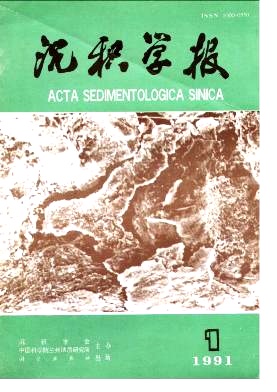Contrasting Investigation by 137Cs Method and 210Pb Method for the Present Sedimentation Rate of Poyang Lake.Jiangxi
- Received Date: 1988-09-02
- Publish Date: 1991-03-10
Abstract: Poyang Lake, located in the south of the middle reaches of Yangtze River, is the largest freshwater lake in China, with an area of 4646km2 and a capacity of 333 hundred million m3 respectively.It's run-off to the Yangtze River is 1457 hundred million m3 every year, which is larger than the total amount of that of the Yellow, Huaihe and Haihe rivers to the seas. It is one of the seasonal transit of water, where the islands and islets, beach-sands and branching streams and channels are distributed crisscross. In addition, many dykes were built widely and blindly around it, which have caused the serious loss of water and soil. Many factors, such as mentioned above, form the landforms- complicated topography and hydrologic conditions made its environment very complicated. It is a new technique developed recently in more than a decade that sedimentation rates in lakes are determined with radioisotopes 137Cs and 210Pb, 137Cs is an artificial nuclide of fall-out from nuclear tesling in atmospheric layer, the highest fall rate of which in the whole world occurred in 1963. It is the stratification of sedimentation in the lake in 1963. if only the maximum peak value of 137Cs in the layer in the vertical depth of the sediment undissturbed at the bottom of the lake should be determined; thus, its sedimentation rate will be obtained. 210Pb is a natural nuclide, if only the relation between the vertical depth of the sediment undisturbed at the bottom and the reduction of 210Pb activity index could be detetmined, its sedimentation rate will be obtained. A method of contrasting 137Cs to 210Pb has been used to give the high range of the lake 11.1-14.6m. water level based on Yellow Sea, and sedimentation rates in the region of the lake, 1.0-3.7mm · a-1, average 2.2mm · a-1.Moreover, contrasting 137Cs method to 210Pb method, and results checked by γ spectrum method are discussed.The results of sedimentation rate determined by 137Cs method are as the same of those by y spectrum method.Because both of the method are carried out with rather strong raclio-activity of 137Cs from nuclear testing in the sediment and the obvious charac+eristic of its maximum peak value of 137Cs in 1963. which especially helpful in determining year order, an accurate sedimentation rate will be obtained. The sedimentation rate measured by 210Pb method is about 16% lower than that by 137Cs or γ spectrum method, because 210Pb activity in the sediment at the bottom is weaker and. furthermore, during the course of 210Pb both from atmosphere to the bottom of the lake with complicated environment and in its separation and purification, a lot of disturbing factors easily cause errors as to lead a lower result.Therfore, it is very important to choose a proper location for sampling and it is necessary to apply two methods of determining year order to contrast sedimentation rates so as to reach satisfactory results.Thus, valuable basic information will be offered for esploration, and harnessing of the Poyang Lake.
| Citation: | Ye Chongkai. Contrasting Investigation by 137Cs Method and 210Pb Method for the Present Sedimentation Rate of Poyang Lake.Jiangxi[J]. Acta Sedimentologica Sinica, 1991, 9(1): 106-114. |






 DownLoad:
DownLoad: